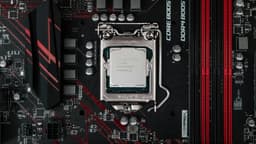Getting Started with Docker Node-RED
Node-RED is an innovative tool designed for visual programming, offering an intuitive flow-based development environment. When combined with Docker, it becomes incredibly easy to deploy and manage your Node-RED applications efficiently. This article will guide you through using Docker to run Node-RED, making your development process smoother and more streamlined.
Introduction to Node-RED
Node-RED is built on Node.js and allows users to connect various devices, APIs, and online services. It has a user-friendly web-based interface that enables developers to create flows by dragging and dropping nodes. This visual representation makes it straightforward to design integrations, automate tasks, and handle data in dynamic ways.
Running Node-RED in a Docker container has several advantages. It encapsulates all dependencies, ensuring a consistent environment regardless of where it's deployed. This makes it ideal for development, testing, and production setups.
Why Use Docker with Node-RED?
Using Docker with Node-RED provides flexibility and simplicity. Developers can quickly spin up new containers without worrying about configuration clashes. Here are a few benefits of using Docker for Node-RED:
- Portability: Docker images are lightweight and can be easily shared and run on any system that supports Docker.
- Scalability: Deploying multiple instances is as easy as running additional containers.
- Isolation: Each application runs in its own container, safely separating its environment from others.
- Version control: Different versions of Node-RED can be managed through Docker images, allowing easy rollbacks.
Prerequisites
To get started, ensure you have Docker installed on your machine. You can find installation instructions on the official Docker website. Familiarity with basic command line operations is also helpful.
It's beneficial to have a basic understanding of Node-RED. Access the official Node-RED documentation to familiarize yourself with concepts if you are new to it.
Running Node-RED with Docker
Starting Node-RED in a Docker container is a straightforward process. Open your terminal and follow these steps:
-
Pull the Node-RED Docker image: This can be done with a simple command:
Html -
Run the Node-RED container: Use the following command to start the container:
HtmlIn this command:
-p 1880:1880maps port 1880 on your local machine to the container.-v node_red_data:/datapersistently stores your Node-RED data in a Docker volume.
-
Access Node-RED: Once your container is running, open a browser and navigate to
http://localhost:1880. You should see the Node-RED interface, ready for you to begin building your flows.
Customizing Node-RED
Customization is key for any project. A Docker-based approach allows you to modify the default settings easily. Create a settings.js file and mount it into your container using volumes.
You can also include additional nodes or flow libraries by specifying plugins in your Docker setup or by installing them via the Node-RED interface after launching your container.
Stopping and Removing Containers
To stop the Node-RED container, use the following command:
Html
Identify the container ID for Node-RED, then run:
Html
To remove it completely, use:
Html
Docker and Node-RED together provide a powerful solution for creating robust applications quickly and efficiently. With ease of deployment, management, and scalability, this combination is ideal for developers looking to streamline their process.
Give Docker Node-RED a try, and start building your next project with ease!












